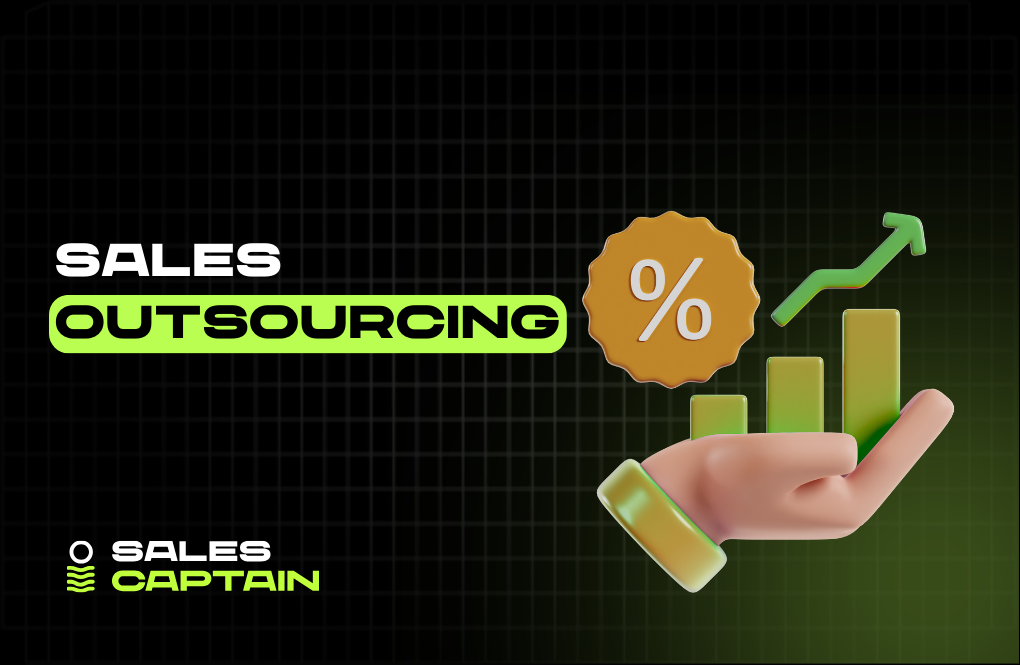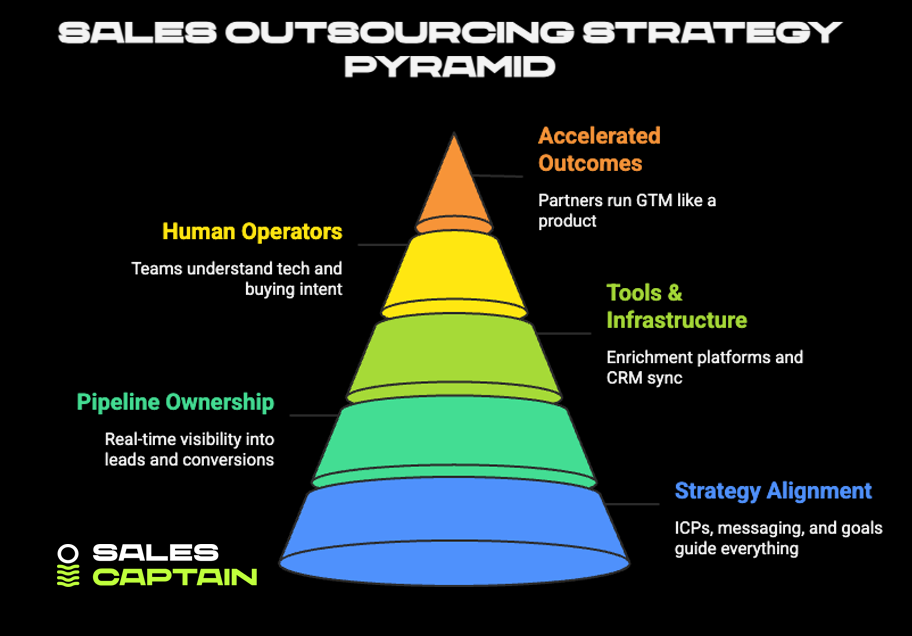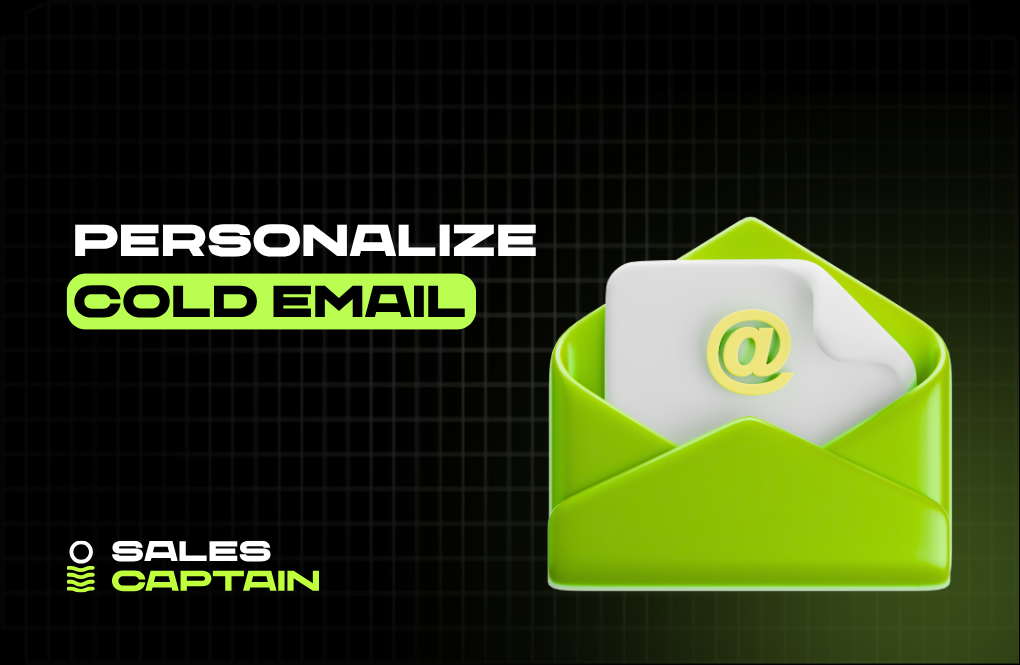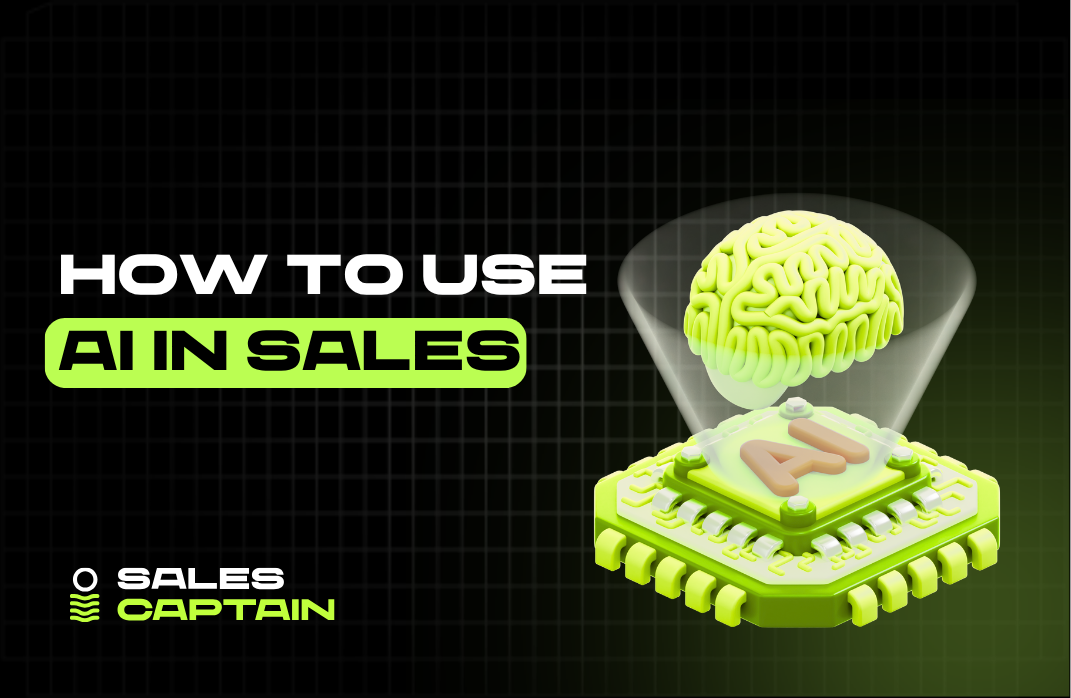

Outsourced Sales: How to Accelerate Pipeline and Scale Revenue Fast


Outsourced sales is no longer just a cost-cutting tactic, it’s a strategic way to accelerate pipeline and revenue without building a sales operation from scratch. By partnering with specialized teams that bring proven playbooks, advanced tools, and deep market expertise, companies can launch targeted outbound campaigns, penetrate new markets, and test messaging faster than traditional hiring allows. Whether you’re a startup chasing growth or an enterprise expanding globally, outsourced sales offers a ready-made GTM engine that delivers results with speed and precision.
Understanding Outsourced Sales

Definition of Sales Outsourcing
Sales outsourcing is when a company hires an external partner to handle parts, or all, of its sales process. That might mean outsourcing top-of-funnel prospecting, full-cycle sales, or appointment setting. It’s not just delegating tasks, it's plugging into someone else’s sales infrastructure.
The goal? Accelerate pipeline generation and revenue growth without building everything in-house.
Today, sales outsourcing isn't just cold calls and basic lead lists. It's demand creation, automation, enrichment, sequencing, multi-channel prospecting, all delivered by specialized operators with ready-to-go GTM infrastructure.
Sales outsourcing has officially crossed from vendor territory to strategy layer.
Key Components of Sales Outsourcing
Outsourced sales can cover a lot. But most successful setups revolve around a few non-negotiables:
- Strategy alignment: Your ICPs, messaging, and goals should guide everything. No plug-and-play tactics.
- Pipeline ownership: Real-time visibility into leads, conversions, and attribution. No black-box reports.
- Tools and infrastructure: Enrichment platforms, sequencing tools, AI filters, CRM sync, outsourced teams bring their own stack.
- Human operators: The best partners don’t sell with scripts. They deploy teams who understand tech, personas, and buying intent.
At its core, outsourced sales is less about offloading effort, more about accelerating outcomes with partners who run GTM like a product.
How Sales Outsourcing Works for B2B Companies
For B2B teams, outsourced sales can run parallel to internal teams or act as a standalone engine. Either way, it touches multiple layers of the go-to-market funnel.
Most B2B companies start with outbound. Lead sourcing. Prospecting. Cold outreach. That’s where signal-based, automated outbound can be 10x more efficient than hiring an SDR team from scratch.
Think scraping leads, enriching context, prioritizing by intent, then triggering outreach, at scale, in hours, not weeks. This is where advanced platforms like Clay (and the people who know how to use it) become essential.
An outsourced agency might handle custom list building, multi-channel outbound, lead routing, or full-cycle calls, whatever accelerates velocity the most. And because GTM is a system, good partners build feedback loops to improve over time.
No fluff. No time wasted. Just pipe, built right.
The Need for Outsourced Sales
Who Benefits from Sales Outsourcing?
Outsourced sales isn't one-size-fits-all. Different orgs use it for different reasons. But almost every stage of business can benefit, if the GTM gap is clear.
Small Businesses
Small businesses usually don’t have time or headcount to build outbound from scratch. Sales outsourcing gives them instant access to skilled reps, playbooks, and tech stacks they couldn’t afford or build alone.
Outsourcing levels the playing field. You can chase bigger deals without a big in-house team.
Medium-sized Enterprises
Mid-market companies often hit a scale plateau. They’ve grown through referrals or inbound, but outbound isn't working, or isn’t built yet.
Outsourcing fills that gap. Fast. It adds the horsepower and know-how to break into new verticals, ISPs, or regions while keeping core teams focused on what already works.
Large Corporations
Big companies use outsourced sales to move faster than internal org charts allow. That might mean testing a new product in a new region without months of recruiting. Or using a boutique outbound agency like SalesCaptain to pressure-test messaging before handing it to internal teams.
Speed and specialization are the key drivers here.
Specific Industries Requiring Outsourcing
Some industries, like SaaS, fintech, or professional services, require nuanced messaging, long sales cycles, or multi-stakeholder outreach. Outsourcing to specialists with deep experience in those verticals can shortcut onboarding and protect revenue.
Also: industries with compliance requirements or highly niche personas often outsource top-of-funnel work to avoid data slip-ups or wasted cycles.
Reasons to Consider Sales Outsourcing
There’s no single reason teams outsource sales. But there are patterns. Honest ones.
Limited Internal Resources
Hiring SDRs is expensive. Training them is even harder. And turnover is brutal. Outsourcing gives you a flexible team that’s already trained, already equipped, and ready to go.
Less time recruiting. Fewer sunk costs. No ramp-up drag.
Expansion into New Markets
Outbound is usually the first move when testing markets. But blunt outreach doesn’t work anymore.
Hiring technical GTM operators through an agency gives you precision, targeted outbound, region-specific messaging, feedback-driven experimentation, without hiring local sales teams upfront.
Cost Constraints
Building a modern outbound motion isn't cheap. The tools alone can be overwhelming: enrichment, scraping, validation, sequence automation, CRM management.
Outsourcing folds those costs into a predictable retainer. No tool sprawl, no sunk overhead.
Need for Specialized Expertise
Cold outreach used to be spray-and-pray. Now it’s about signals, timing, and workflows.
Outsourced sales agencies don’t just write copy, they run experiments. They segment leads, test angles, parse signals, and optimize conversion through data.
This isn’t intern-level work. It’s ops work. And unless you have that in-house, outsourcing is often the smarter call.
Focus on Core Business Functions
Some companies don’t want to build outbound. And they don’t need to.
If your internal team is great at closing warm leads or building partnerships, let them run with that. Outsource top-of-funnel and get more shots without diluting your internal focus.
Advantages of Outsourcing Sales
.png)
Cost Efficiency and Scalability
Outsourcing eliminates the guesswork in budgeting. No recruiting. No training. No tech procurement or license juggling.
You pay for outcomes, not headcount. And when you want to ramp, new vertical, new persona, new territory, you plug in more capacity instead of hiring from scratch.
That kind of scale-flex isn’t just convenient, it’s strategic.
Enhanced Focus on Core Operations
Outsourcing lets in-house teams stay locked on what they do best, whether that’s closing enterprise deals, building partnerships, or driving inbound.
The outbound engine runs in parallel. No calendar conflicts. No tug-of-war over lead handoff. Cleaner workflows, better alignment.
GTM becomes a system, not a scramble.
Access to Advanced Technology and Expertise
Building a modern outbound motion from scratch? You need Clay for scraping, enrichment, signal scoring. You need Zapier or Make for routing. You need Replit or Python if you’re layering in AI logic.
Or, you just hire people who already live in that stack.
Outsourced GTM teams bring precision tooling, programmatic execution, and ironclad workflows. You skip the setup and get straight to pipeline.
Faster Market Penetration and Expansion
When you're breaking into new regions or launching new products, speed matters more than polish.
Outsourced sales teams get you into conversations faster. They test messaging, report back, pivot when needed, and scale what sticks.
You get signal, then scale. Without waiting for a team to ramp.
Improved Customer Engagement and Relationship Management
Outsourcing doesn’t stop at top-of-funnel.
Some providers handle full-cycle sales, including discovery calls, demos, and nurturing. That means smoother handoffs, reduced drop-off, and stronger alignment with how buyers actually want to buy.
And if you're just using them for outbound? They still deliver cleaner leads, with better context, so internal teams can convert faster.
Data-Driven Insights and Accountability
The best sales partners don’t just run playbooks. They build tight feedback loops.
Messaging isn’t a static deck. It's a living system, fed by reply rates, call performance, CRM touches, and pipeline movement.
Outsourced teams bring dashboards, attribution models, and data-backed suggestions weekly, not quarterly. Which means smarter experiments and faster wins.
Challenges of Outsourced Sales
Communication Barriers
External teams can’t read your mind. Without tight alignment on ICPs, tone, and goals, campaigns drift, and underperform.
The fix? Weekly feedback loops, shared dashboards, and kill switches if targeting misfires. Good teams build this in. Lazy ones don’t.
Loss of Control Over Sales Process
You can’t walk over and ask the SDR what happened on that last call. You’re trusting someone else with early buyer interactions.
That's risky. Unless there's transparency, SLAs, and real-time reporting.
The smartest teams keep strategy in-house and execution out-of-house. That way, the vision drives the motion.
Cultural and Operational Differences
If your brand is clean, professional, and consultative, but your outsourced team sounds like boiler-room telemarketers? That's a problem.
Partners need to reflect your tone, your values, your message. Cultural alignment is non-negotiable. Especially if they're doing live calls or enterprise outreach.
Potential Risks to Brand Image
One bad cold email can burn a whole account. One wrong call can get you flagged internally at a top prospect.
Outsourced sales puts your reputation in another team’s hands. That’s why trust, process, QA, and shared ownership are essential.
No shortcuts. No generic scripts. No “spray and pray.”
Types of Sales Outsourcing Models
Inside vs. Outside Sales
Inside sales means remote outreach, calls, emails, LinkedIn DMs, automated sequences.
Outside sales involves face-to-face meetings, in-person networking, or trade shows. It's higher touch, slower scale.
Outsourced teams usually lean inside. Faster motion, scalable systems, cleaner data. But for high-value enterprise deals, hybrid models are growing.
Inside for efficiency. Outside for impact.
Full Sales Team vs. Partial Outsourcing
Some companies want an entire outsourced GTM arm: lead sourcing, appointment setting, discovery calls, even negotiation support.
Others just want help filling the top of the funnel.
Both work. The key is clarity. Know what you’re offloading, and what stays internal.
Blurred lines create dropped leads and missed expectations.
Project-Based vs. Ongoing Engagement
Project-based outsourcing works if you're testing messaging, piloting outbound, or exploring a new market.
But ongoing engagement is where the compounding gains happen. Better segmentation. Smarter workflows. Compound learnings.
Most fast-growing B2B teams start small, measure impact, then scale with an ongoing motion. That’s when outsourcing becomes acceleration, not just support.## Choosing the Right Outsourcing Partner
Criteria for Selecting a Sales Outsourcing Company
Not all outbound partners are built the same. The difference between playbook pushers and pipeline builders comes down to three things: what they’ve done, how they operate, and why they win.
Experience and Specialization
You’re not hiring generic sellers, you’re buying access to proven, domain-specific operators who know your space.
Look for:
- Industry alignment. Have they worked in your market, with your kind of buyer?
- Persona fluency. Can they speak your ICP's language without robotic scripts?
- Go-to-market depth. Do they understand outbound as a system, not a sequence?
No B2B sales motion wins without nuance. Especially if you're in a regulated space, long sales cycle, or technical product category.
You want specialists who have already made the mistakes... somewhere else.
Technology and Resources
The best partners don’t just bring people, they bring the stack.
Do they operate in Clay? Can they run scraping, enrichment, scoring, and routing as a unified flow? Is AI baked into sourcing logic, or just bolted-on?
You’re looking for workflows, not warm bodies. Outbound today is data-first and timing-driven. Without automation and infrastructure, scaling is guesswork.
And if they’re still manually researching leads and blasting emails via CRM? Hard pass.
Proven Track Record of Success
Case studies aren’t enough. Anyone can name logos.
Look for KPI-level proof: Meetings booked, reply rates, positive signal data, revenue attributed, cycle time reduced. Bonus if it’s in your space or GTM stage.
And watch how they talk about their success. Do they measure inputs, or outcomes?
You want strategic operators, not task vendors.
Key Questions to Ask Potential Partners
Figuring out who to hire starts with knowing what to ask. Skip the checklist. Focus on clarity.
Try these:
- What’s your approach to building ICP-specific messaging systems?
- How do you run targeting logic and segmentation at scale?
- What tools do you use for sourcing, enrichment, and outreach?
- How do you integrate with our CRM and reporting workflows?
- How often do you iterate on copy and targeting based on response data?
- Can you walk us through a recent campaign, what worked, what didn’t?
- How do you ensure brand alignment in tone and customer interactions?
If their answers sound scripted or generic, run. You want curiosity, depth, and adaptive thinking.
The best outsourced partners act like embedded growth teams, not contractors.
Implementation of Outsourced Sales
Steps to Successfully Outsource Sales
You can’t just hand over a product and expect pipeline. Success starts with structure.
- Define clear GTM goals. What do you actually want, meetings, closed revenue, expansion?
- Align on ICP and messaging. No vague personas. This means use cases, fringe signals, deal triggers.
- Select the right scope. Top-of-funnel only? Full-cycle? What stays internal vs handed off?
- Share materials + context. Previous campaigns, decks, wins, loses, the more signal, the better.
- Agree on tools and data access. CRM view? Dashboard access? Pre-approved messaging controls?
- Set performance expectations early. SLAs, weekly reviews, kill-switch criteria, all upfront.
Outsourcing isn’t a plug-and-play thing. It’s a system handoff. Treat it that way and you’ll build real compounding motion.
Integrating Outsourced Teams with In-House Staff
Two teams. One motion.
The most common fail? In-house reps don’t trust leads or insights from external teams, because they weren’t looped in early.
Fix this by:
- Hosting joint kickoff sessions so everyone gets the same GTM guidance
- Creating shared Slack channels or async updates for live feedback
- Standardizing handoff protocols: CRM notes, persona tags, deal source clarity
- Getting buy-in from sales managers. If they aren't aligned, reps won’t be either
The magic happens when internal and external teams build mutual trust. That starts with visibility, consistency, and shared accountability.
Not siloed spreadsheets and weekly “surprise” updates.
Monitoring and Measuring Performance
You can’t manage what you don’t measure. But don’t just track calls-per-day or email sends.
What actually matters:
- Positive response rates (not just replies)
- Meetings booked by ICP tier and persona
- Pipeline entered, and pipeline converted
- Time-to-first-meeting after campaign launch
- Attribution accuracy: where leads actually came from
Dashboards should be real-time, not monthly. Have a growth loop: what worked this week, what’s changing next?
And if they aren't willing to show you performance at the message and persona level, they’re hiding weak ops behind vanity stats.
Case Studies and Success Stories
Examples of Successful Sales Outsourcing
Plenty of teams have bent their growth curve the second they outsourced intelligently.
- A B2B SaaS firm targeting mid-size logistics companies used outsourced outbound to break into 2 new verticals in under 30 days. Zero internal SDRs. Just a partner running Clay-driven enrichment and custom SDR workflows. Net-new revenue sourced? $230K in Q1.
- A fintech startup expanded from the US into the EU without touching headcount. They outsourced localized messaging, EU-based outreach, and routing. Eight countries activated in 90 days. Lift in total pipeline velocity? 2.3x.
- One healthtech company used a cold outreach agency (like SalesCaptain) to test two personas side-by-side. Result? Rewrote internal ICP docs based on validated outbound signals, and 5x’d meeting volume in 6 weeks.
Good outsourced sales isn’t side hustle. It’s pipeline deployed with precision.
Lessons Learned from Outsourcing Experiences
It doesn’t always go right. Some hard-earned wisdom from teams that’ve walked the road:
- If the ICP is fuzzy, the results will be worse. Get alignment early and often.
- Don’t go cheap. Bargain-bin providers cost more in wasted leads and brand damage.
- Shared dashboards = shared truth. Hiding in email threads is a red flag.
- The tech used matters. If they don’t build systems with tools like Clay, they’ll lose to teams that do.
- Spend time onboarding right. A lazy 2-pager and a prayer isn’t strategy. You get what you put in.
Truth: it’s not magic. But when done right, outsourcing turns into your unfair advantage.
Future Trends in Sales Outsourcing
The Role of Technology in Sales Outsourcing
Outbound used to be human brute force. Now it’s machine-guided intuition.
Agencies and GTM teams use AI and platforms like Clay to:
- Monitor buying intent signals live
- Auto-generate lead lists in real time
- Assign outreach cadences by behavior, not just firmographics
- Run GPT-powered personalization across hundreds of contacts a day
The future? Hybrid operators who understand both sales and systems.
Sales outsourcing firms are shifting from hiring SDRs to recruiting AI-native workflows and automation architects. GTM isn’t just about reps anymore. It's about technical execution at scale.
Evolving Customer Expectations
Buyers are faster, busier, and harsher than ever.
They expect:
- Context-rich outreach (not name-drop cold spam)
- Speed. No slow response chains or fuzzy calendar games
- Value-oriented messaging that’s about their business, not your product
That’s what outsourced partners must now deliver from Day 1.
Spray-and-pray is dead. That old-school model of “outsourced dialing” has no place in 2024.
Outsourced sales in the future will act more like embedded demand gen engines, tuned to micro-signals, layered with content, and tightly sequenced based on persona.
It’s not outreach. It’s GTM acceleration, redefined.
FAQs
Almost any company with a pipeline gap. But especially:
- Early-stage startups needing motion without headcount
- Mid-market firms testing new verticals or personas
- Enterprise teams under pressure to launch fast, without hiring
- B2B orgs with complex products that require precision, not spam
If your internal team is maxed out, or just not wired for outbound, outsourcing fills the gap with speed and skill.
You skip the ramp time. The tech procurement. The wrong hires. The tools tax.
Instead of paying six figures to build an SDR team, you pay a predictable monthly rate for pipeline and execution. And when done right, outsourced partners bring systems already built, so you're not buying effort, you're buying outcomes.
Cost drops. CAC drops. Speed goes up.
Biggest ones?
- Mismatched ICP or messaging → wasted cycles and weak leads
- Poor brand alignment → bad emails that hurt reputation
- Opaque operations → no visibility into what’s working and what’s not
These aren't inherent flaws of outsourcing. They're flaws of bad partners. With the right team and playbook, risk drops to near-zero, and performance compounds.
Look for three things:
- They’ve won in your space or with similar buyers.
- They operate modern GTM workflows and tools.
- They speak fluent funnel, showing you why campaigns work, not just that they do.
And don’t settle for fancy case studies. Ask for real data. Sit in on ops meetings. If they feel like an extension of your team, you’re probably on the right track.
Absolutely. In fact, the best models rely on it.
Outsourced teams run top-of-funnel. Internal AEs pick up at qualification. Marketing feeds intelligence back upstream. Everyone plays a role.
It only works with strong systems, clean handoffs, synced reporting, and mutual trust.
The result? A full GTM engine that runs smoother than most in-house setups.
RELATED ARTICLES
Lorem ipsum dolor sit amet, consectetuer adipiscing elit, sed diam nonummy nibh euismod tincidunt ut laoreet dolore magna aliquam erat volutpat.




.jpg)





